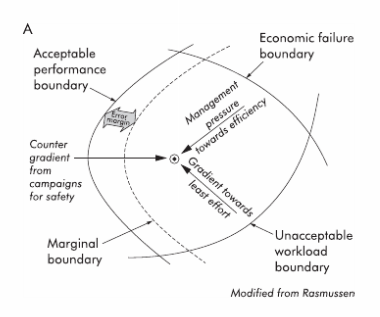GLOC_The Human Diver
Contributor
Introduction
Ever looked back at an incident or accident to find the reason it happened and realised that you were stressed, tired or distracted and that is what caused the event? These are three of the ‘Dirty Dozen’ which human factors experts have identified as key contributory factors or precursors to incidents and accidents.
The term ‘The Dirty Dozen’ refers to twelve of the most common human error pre-conditions or precursors which lead to accidents and incidents. These twelve have been shown to influence people to make mistakes, errors or violations. The concept was developed by Gordon Dupont in 1993 and is now a key element to Human Factors in Maintenance training.
Note that these twelve are not the only factors which lead to mistakes, errors and violations, but they certainly give you a focal point to identify conditions where errors and violations are more likely to occur. Different domains or even subsets within domains like pilots, ramp crews, air traffic control within aviation have different ‘dirty dozens’ based on captured and analysed incident data. Unfortunately, no such data exists in diving which looks at factors which contribute to incidents and accidents. Consequently, the following is based on the original list and is not arranged in any specific order.
- Lack of communication.
- Distraction.
- Lack of resources.
- Stress.
- Complacency.
- Lack of teamwork.
- Pressure.
- Lack of awareness.
- Lack of knowledge.
- Fatigue.
- Lack of assertiveness.
- Norms.
As you work through the Dirty Dozen, you will notice the interdependence e.g. lack of resources or miscommunication can increase stress and lack of knowledge can lead to reduced awareness.
As this is quite a long topic, I have split it into two parts, the second part being published mid-January 2019.
Lack of Communication
Poor communication is often a major contributory factor in incidents and accidents and the need to improve communication is one of the key goals identified in my classes. Communication refers to both the transmitter (speaker) and the receiver (listener) as well as the medium and the systems used. Communications are often assumed to be person to person, but dive computers, SPGs and CCR controllers all communicate information to the diver. In all cases, it is often assumed that the information has been understood by the receiver, either because the receiver made some assumptions about missing information, or because the transmitter assumes the received heard/saw and understood the message. With verbal communication, it is common that only 30% of a message is received and understood.
Countermeasure. For a dive to be successful and all the goals/tasks/limitations understood, information must be passed between team members or instructor and student. Sometimes these messages are complex. If this is the case, write the message down or use checklists/worksheets. Verbal messages should be kept short with critical information contained at the start of the message and then repeated at the end. While assumptions are key to operating at pace, they should be avoided when it comes to critical information.
Distraction
Distraction is part of our modern lives. We are unable to perceive and process the vast amount of information available to our senses. As such, we filter and discard what we don’t think is important or relevant. Even worse, if something comes to our senses which looks really ‘interesting’ we start to focus on that and forget what we were doing before. Those distractions could be conversations, other people doing things around you, environmental issues like noise, wind or the cold, along with problems that need to be solved straight away for safety reasons like a piece of dive equipment falling over or about to blow away. Distractions can also be emotional or psychological in nature like family issues or how you’re going to pay for the trimix bill!
Psychologists believe that distractions are the number one reason for forgetting things and if you’ve forgotten to do something unless something triggers the thought you forgot, it will remain forgotten! We have a tendency to think ahead (in many cases that is a good thing), but this means that when we return to a task, we think we are further ahead than we really are.
Countermeasure. Two ways to deal with distraction are to look at preventing it and then mitigating it.
- Prevention. Let your team or students know that you are doing something critical (like assembling your camera or CCR) and that unless it is really urgent and can’t wait they should hang back and come and find you afterwards.
- Mitigation. If possible, finish the task and then go to the ‘distraction’. However, if you are going to be drawn away from the primary task, put a mark or sign as to where you are in a sequence that is really obvious to draw your attention back to that. I would also recommend you go back two or three steps in any checklist as we have a tendency to overestimate progress.
If we don’t have the correct parts or tools to complete the task, as divers we often try to improvise with what we have. In many cases, it is fine and nothing happens. However, unless we understand the criticality of the components or the task at hand, then disaster can strike. Resources also refer to people, skills, experience, knowledge etc and a lack of these can interfere with our ability to complete the task safely and effectively. Even more important is that if the task is successful without using the correct resources, normalisation of deviance can set in (see Norms).
Countermeasure. When the proper resources are available and to hand, there is a greater chance that the task will be completed more effectively, correctly and efficiently. This might mean a small expenditure in the short term, but lead to safer divers and potentially saving money in the longer term when the botched job doesn’t need to go to a service or repair tech.
(Cont...)




